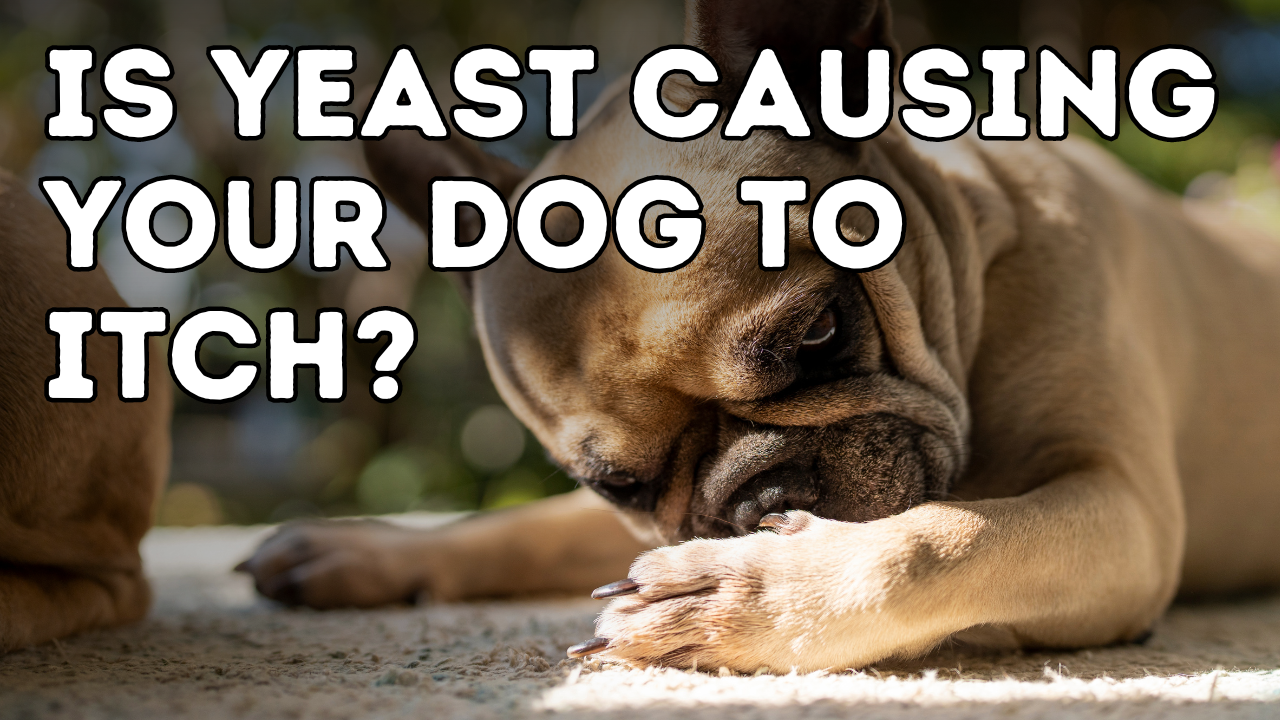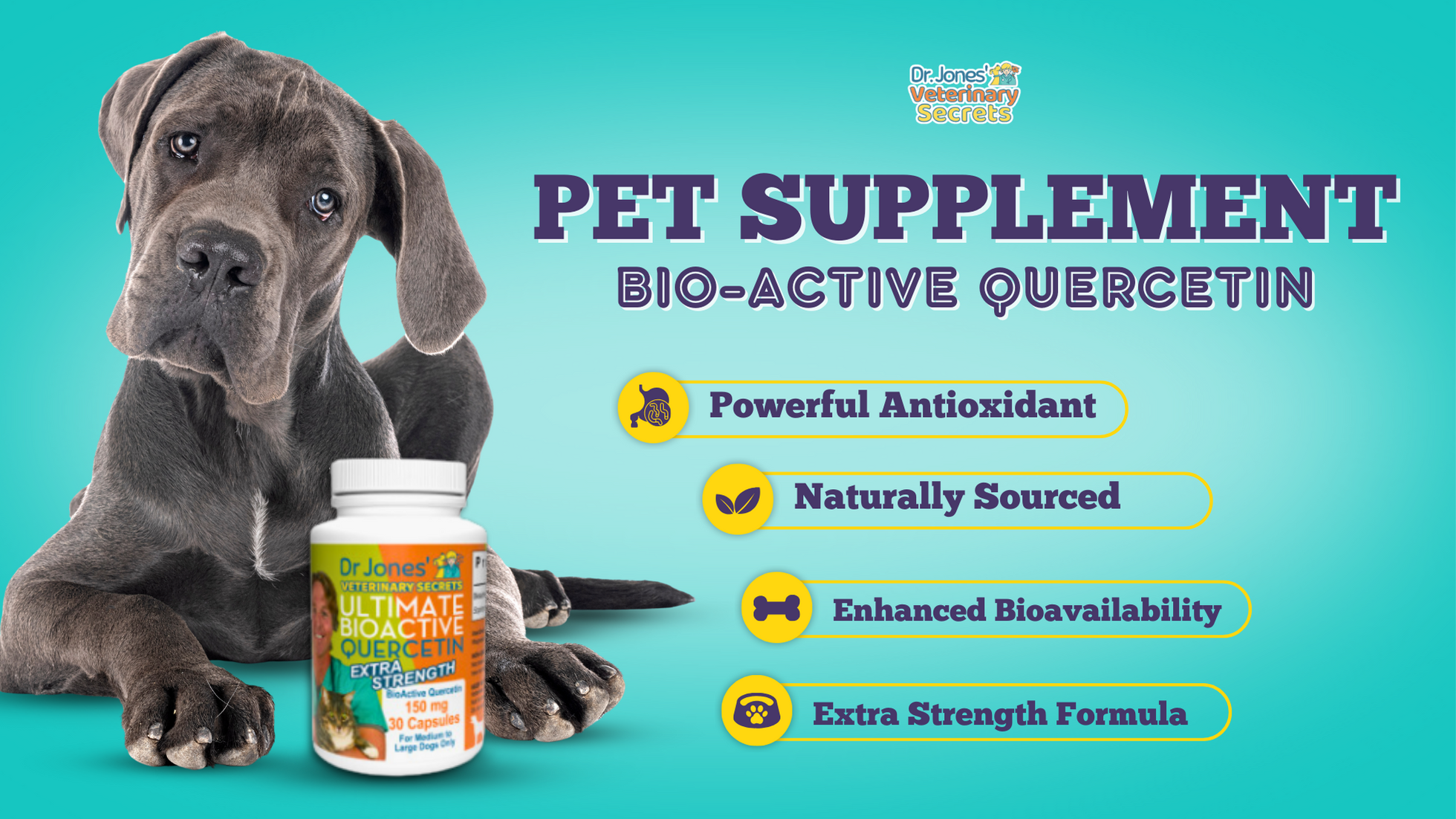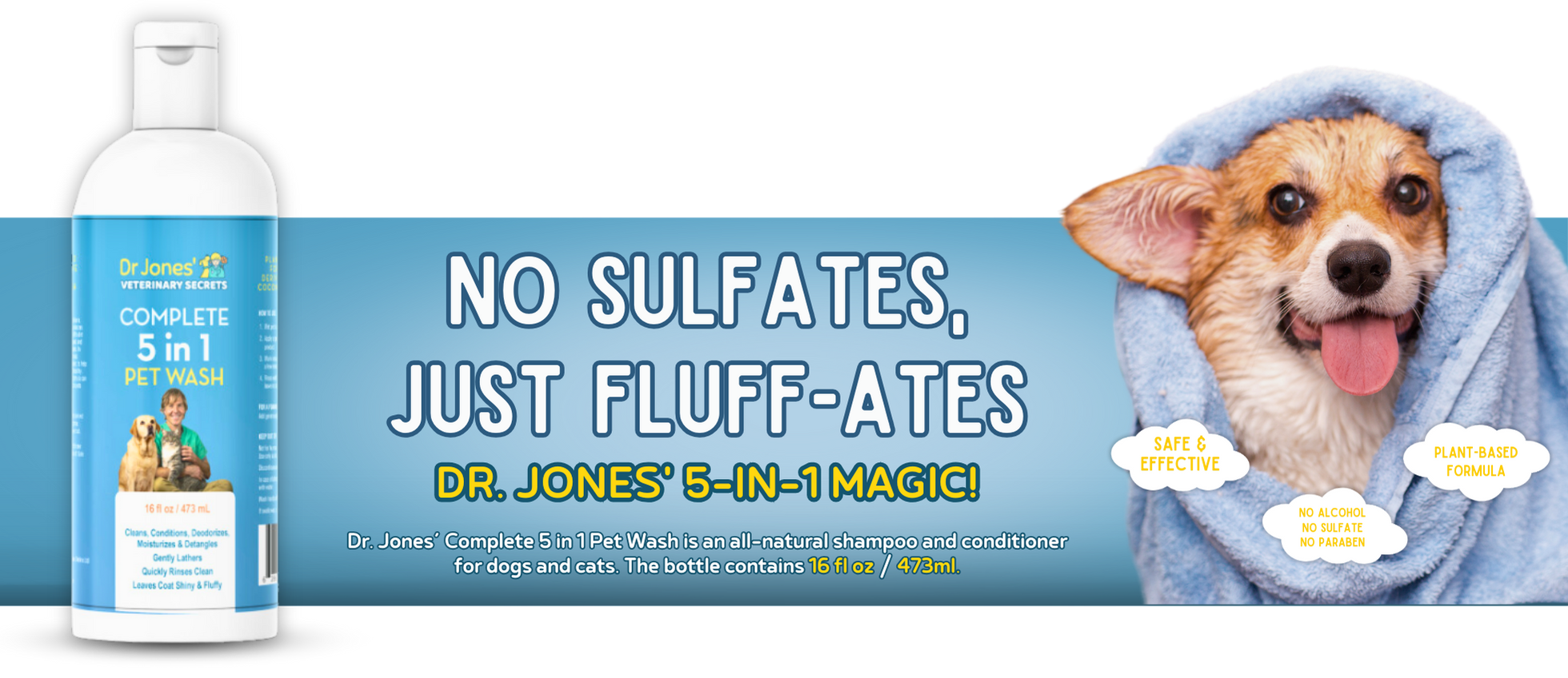Is yeast causing your dog to itch?

The million dollar question and answer… .
What is really causing your dog to itch, and the magic pill that will stop it all.
Turns out their isn’t one magic pill, and the current veterinary ones (steroids, apoquel, atopica, cytopoint), need to be given constantly, with potential for serious side effects 🙁
It’s important to get to the actual cause of the allergies, and treat those.
If it’s yeast, then treat for yeast, and this newsletter will show you how to do that!
One of the natural products that has helped a ton of pet parents manage their dog’s allergies at home is the flavonoid found in apple peel, Quercetin.
We now have a whole plant Quercetin supplement that has worked awesome for my brother’s dog, the allergic Border Collie, Angus.
Plus it’s NOW 15% OFF here:
For BIG Dogs… Dr Jones’ EXTRA STRENGTH Bioactive Quercetin for Dogs and Cats
For the LITTLE Guys… . Dr Jones’ BIOACTIVE Quercetin for Dogs and Cats




Where can i buy your products in South Afric.
Unfortunately we cannot ship our products to South Africa, due to the unreliable shipping services available in your area. We have experienced too many lost shipments.
If you would still like to order, you can ship to a friend or service in another area and have them forward the package to you.
Is this good for ear yeast infections?
Yes it is and here’s an article that can help:
Having an ear infection can be so painful, so can you imagine what it’s like to have recurring ear infections like many of our dogs get? One of the most important ways to help your dog is with regular ear cleaning.
We now have a new Dog Ear Wash made with natural ingredients – it has no alcohol so it will not be irritating or painful.
If you have a dog with an ear issue, I encourage you to try it:
Dr. Jones’ Natural Ear Relief Wash For Dogs
EAR INFECTIONS in DOGS
SIGNS
Your pet keeps shaking his head and scratching at the ears. Often you will see a foul-smelling black, yellow, or brown discharge. The ears may be very red and tender.
* Shaking the head
* Scratching at the ears
* Redness to the ear flap or entrance to the ear canal
* Discharge from the ear canal
* Pain when the ear is touched
* Thickening of the ear canal
* Rubbing the face/ear on the ground or furniture
* Licking the paws excessively (a general sign of an allergy)
* Itching or licking other parts of the body (a general sign of an allergy)
* In severe cases, if the eardrum ruptures, the infection can spread to the middle and inner ear causing symptoms like head tilt, walking abnormally, circling, falling over, or pain when eating or opening the mouth fully.
CAUSES
Ear infections are most typical in dogs. Most ear infections are caused by an underlying allergy. Some are caused by water in the ear after bathing or swimming. Dogs with large floppy ears, such as basset hounds, are prone to infections as their ear canals have poor air circulation, trapping moisture and allowing bacteria and yeast to grow. Dogs with ear infections caused by yeast usually have a black discharge; this is commonly second to an allergy. Dogs with bacterial ear infections often have an organism called staphylococcus; in rare cases a more serious infection is caused by bacteria called pseudomonas.
STEP 1- CLEANING
CLEAN THEM. White vinegar (acetic acid)is very effective at removing debris from the ears and killing the yeast and bacteria responsible for ear infections. *If your dog has red, open wounds, do not use this as it will be painful.*
You need to use a soothing topical first (i.e. olive oil and Vitamin E). Dilute the vinegar with water/green tea (80:20), pick up a syringe from a local pharmacy and put 5 ml of the vinegar solution per 20 lbs of body weight into the affected ear.
Natural Ear Wash:A holistic, alcohol free ear wash is a great option for regular ear cleaning, such as Dr Jones’ Natural Ear Relief Wash [https://shop.veterinarysecrets.com/dr-jones-natural-ear-wash.html/]
STEP 2 – TREAT the infection
Apple Cider Vinegar is NATURALLY antibacterial and antifungal, so will help with most cases of ear infections. I prefer a 80:20 solution of ACV and Warm Water/green tea. Apply 5-10 drops twice daily for 7-10 days
Sweet Almond Oil in combination with lavender oil is beneficial when the ears are very inflamed, and the ACV will be irritating and painful. 2 tablespoons of almond oil, 10 drops of lavender oil
BUROW’S SOLUTION.This is one that I discuss for use in hot spots, but it can also be used for ear infections and ear cleaning. It is a solution of aluminum acetate in water. It is used as an astringent wet dressing to relieve inflammatory conditions of the skin, such as swelling, allergies, and bruises. Burow’s solution has antibacterial effects, and will inhibit the growth of bacteria commonly found in ear infections. Apply five to six drops in both ears, cleaning twice daily.
ANTI-YEAST MEDS.Medication for yeast in people, will often work in dogs. If your dog has black waxy debris, the ears smell ‘sweet’, then it is likely a yeast ear infection. Canesten and Monistat both work well. Apply twice daily for 7-10 days.
New DIY Remedy includes 2 OTC medications that make up most of the common Veterinary Ear medications for animals:
1. Canesten (the drug name Clotrimazole). This is the most common antifungal used in veterinary medicine
2. 1% Hydrocortisone (Corticosteroids). These are in virtually EVERY Dog and Cat topical skin medications to decrease inflammation in the ear/on the skin
Directions: 1 teaspoon of Canesten
1 teaspoon of 1% Cortisone
Mix evenly in a bowl and you are left with a white cream that looks like cake icing. For skin allergies:Apply topically to the affected skin twice daily for 7-14 days. For ear infections: apply 1/4 inch to the end of your finger. Seat it into the base of your pet’s ear. Massage ear base to work it down the ear canal. Do this twice daily for 5 days for Ear Yeast infections.
STEP 3 – TREAT the UNDERLYING CAUSE (ALLERGIES)
BIOFLAVONOIDS.These are the wonderful group of structures found in the pigment of fruits and vegetables. Quercetin has been effective for people with allergies and may be effective in dogs. Our new whole plant extract quercetin supplement, Dr Jones’ BIOAVAILABLE Quercetin has been helping many dogs
ANTIHISTAMINES.Benadryl (diphenhydramine) is the most commonly used antihistamine. It is given at a dose of 1 mg per pound of body weight, 2-3 times a day. A newer antihistamine, Ceterazine (Zyrtec) has fewer side effects, and can be given once daily. It is dosed at 5mg/10lbs daily. It often takes 14 days of using these to see if they are helping.
Herbal Antihistamines: Stinging Nettle is a proven natural antihistamine, and very safe for our pets. NETTLE dose of 1 teaspoon/10lbs daily.
95% Curcumin.At higher levels curcumin stimulates the adrenal glands to secrete cortisone. The standard oral dose of 95% curcuminoids is 100mg/10lbs daily- Our High Absorption 95% Curcumin is dosed at 250mg/50lbs once-twice daily
The omega 3 fatty acids in Krill Oil are anti-inflammatory and can help your dog with recurring ear infections. Krill oil dose of 500mg/20lbs daily. Fish Oil dose is 1000mg/20lbs daily. Our Omega 3 supplement, Dr Jones’ ULTIMATE Omega 3 Formula for Dogs and Cats is a good option.
I have a pit bull that had yeast in his one ear and under him all over his body. It smells and he loses hair. I have taken him to a veterinary and she prescribed a small bottle of shampoo that cost 24.00 and I was to bathe him every other day. But bottle of shampoo didn’t last that long. Now he is on keloconazole 200mg. My dog is 80 pounds.
Here’s an article that can help:
https://youtu.be/8WWn3gvEUQs